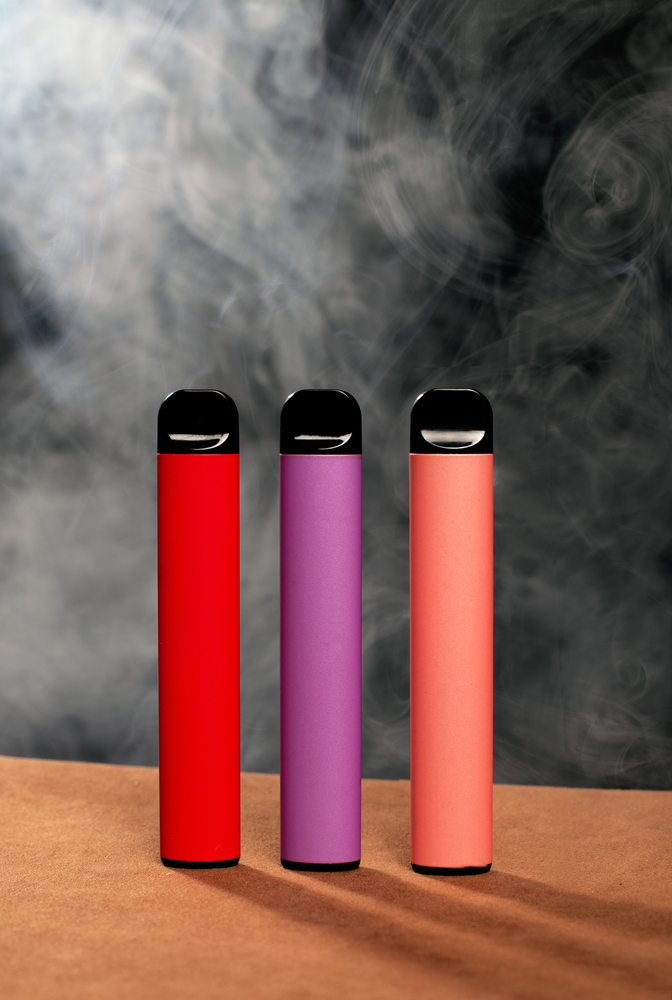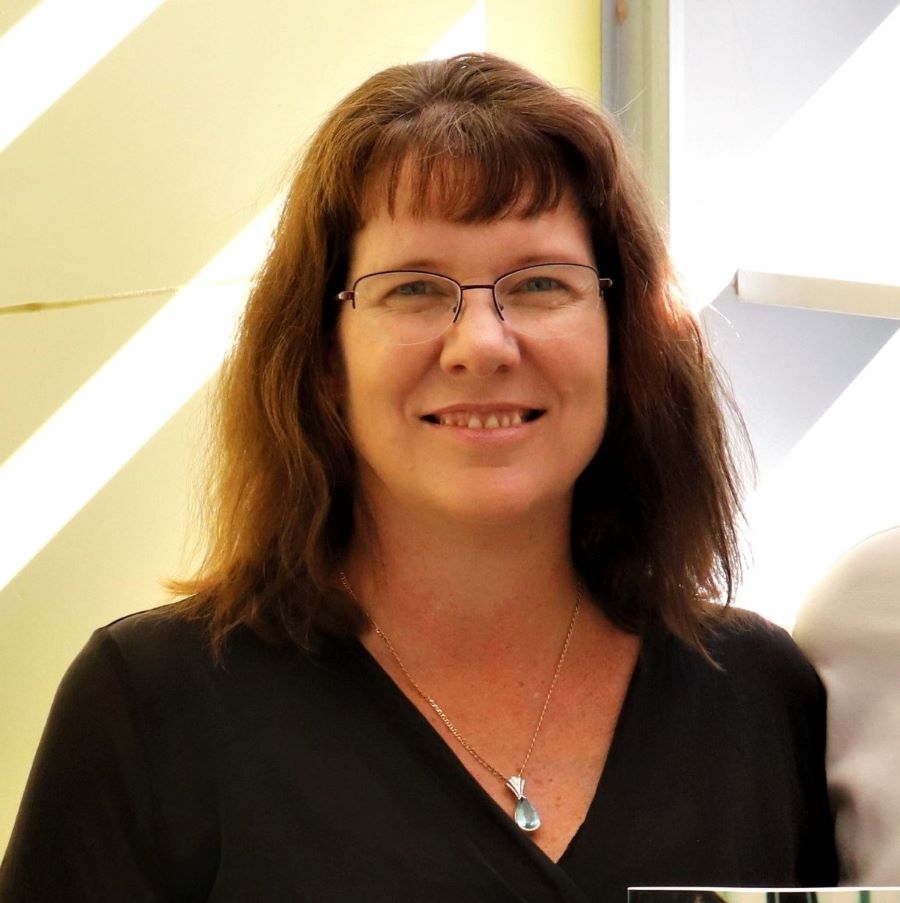In a world as technologically advanced as the one we live in, it’s no wonder a once-popular – and potentially deadly – pastime has seen a digital upgrade.
Smoking dates back centuries and has seen a variety of forms since tobacco was first chewed and smoked some 2000 years ago before cigarette machines were developed in the late 1800s.
If you cast your mind back to movies or advertisements during the 20th century, smoking was a way of life, widely accepted and considered fashionable.
It was featured on the big screen in 1978’s Grease, where Olivia Newton-John’s character Sandy transforms from pure and innocent teen to smoking-hot vamp, and animated Disney classics such as 101 Dalmatians (1961), where villain Cruella de Vil always carries a cigarette.
During the world wars, smoking increased dramatically, mainly due to the policy of providing free cigarettes to allied troops as a ‘morale-boosting’ exercise.
As the years went by, important conversations emerged about the potentially deadly health risks associated with direct and second-hand smoking and links to some forms of cancer.
We became less enthusiastic about smoking cigarettes. But then along came a new device.
A new trend in smoking is emerging, and it is one that is having a significant impact on some of society’s most impressionable minds – teenagers.
E-cigarettes are becoming popular with people of all ages. The battery-operated device makes vapour for inhalation, simulating cigarette smoking.
The term commonly associated with using an e-cigarette is known as ‘vaping’.
The e-cigarettes are appealing due to their candy-like flavours and low odour, as opposed to the strong smell associated with a cigarette.

But just like the cloud of vape that comes from these relatively inconspicuous devices, a cloud of uncertainly relates to associated health risks and the legalities around e-cigarettes.
In Australia, as of October 2021, it is illegal to use, sell or buy e-cigarettes containing highly addictive nicotine without a prescription.
Over-the-counter vapes that do not contain nicotine are accessible to anyone over the age of 18. However, the Lung Foundation Australia says many users find loopholes by buying products and liquid cartridges online.
It is understood that these products are often imported from overseas – meaning, there is little control over how they are manufactured, how they are labelled and what they contain.
When it comes to their use by teenagers, recent Australian Bureau of Statistics data reveals more than 7.6 per cent of 15 to 17-year-olds have used an e-cigarette or vaping device at least once.
However, it is believed this number could be higher, due to responses being provided by an adult living in the same household.
A ground-breaking behavioural study by Perth-based social enterprise The Behaviour Change Collaborative (The BCC) has also found that for most teens, vaping is perceived as normal.
The BCC’s founder and managing director Luke van der Beeke says teenagers, themselves, confirm growing evidence that vaping among their peers is widespread. The research was conducted over two iterative stages, with 92 teenagers attending years 7 to 12 in Western Australia.
It sheds much-needed light on the knowledge, perceptions, attitudes and influences on teen vaping.
“While many teens know vaping is bad for them, their knowledge is superficial,” Mr van der Beeke says.
“For teens who vape, the benefits far outweigh the costs.
“And for teens, the key benefits are the nicotine hit and the flavourings.”
The study also reveals that for most teens, vaping without nicotine or flavour is considered pointless and that disposable vapes are the most used because they are easy to access and cheaper to buy than refillable vapes.
It suggests older teens might buy vapes directly from retailers and have rarely, if ever, been asked for ID.
Social media trading is also common, while younger teens may access vapes through older friends and siblings.
As a University of the Sunshine Coast senior lecturer and researcher in the field of psychology, especially child/adolescent development, Dr Rachael Sharman tells My Weekly Preview it is natural for teenagers to experiment with new trends.
But it is also important that they know the risks involved.
“Smoking is old school now, so this is basically the new smoking,” Dr Sharman says. “Adolescence is typically a time of risk taking and experimentation and doing anything that separates you from your parents or previous generations.”
She says one of the main issues with the vaping ‘trend’ is the way they are marketed to teenagers across social media platforms, including Tik Tok.
“The first time most people experience a cigarette, it is quite unpleasant, but these are quite pleasantly favourable and easier to tolerate.”
Dr Sharman says vaping is much easier to conceal than smoking and so it can be harder for parents and teachers to police: “It’s much easier to conceal and I think that’s important as well as to why teenagers are picking it up.
“If someone is vaping in their room, you are unlikely to know.
“Vaping is a lot less intrusive and unless you walk into someone’s vape cloud, you can’t really detect that people are vaping.
“If you try and light up a sneaky cigarette out the back of the toilets at school, five teachers are going to descend upon you immediately.”

The Lung Foundation Australia says e-cigarettes can serve as a ‘gateway’ to nicotine addiction and tobacco smoking later in life.
Dr Sharman references a recent study around this that revealed vapes – particularly if they contain nicotine – can lead to addiction.
“What the study found was that if you look at teenagers who have never smoked, teenagers who vaped were three-times more likely to end up smoking in the end.
“It’s worth reminding people nicotine is a very addictive drug and the earlier (teenagers) get addicted to it, the harder it is to get rid of it.
“The developing brain seems to be particularly interested in nicotine, so we want to prevent that as much as possible.”
In terms of raising discussions about the risk of vaping with teenagers, Dr Sharman suggests asking them what content is coming through on their social media and then taking them through a critical analysis.
“Sit down with your teen and have a look at some of the marketing coming through Tik Tok,” Dr Sharman says.
“Get them to critically think about what it is, why they are marketing it to them and what (an e-cigarette company’s) agenda is.
“Rather than tell them what the teenager should think, pose a series of questions to them to make them think about what is going on and hopefully they will come to their own conclusions.”
Schools across the Sunshine Coast are also cracking down on e-cigarette use, including Immanuel Lutheran College and Sunshine Coast Grammar School, which are doing positive educational campaigns with staff, students and parents through leading experts from the university.
Some schools have also installed vape-detection sensors in bathrooms to deter the behaviour.
The Queensland Police Service has launched a series of videos designed to urge school-aged children to “think twice” before vaping.
The two-part video series also includes information around the legislation affecting vaping, as well as health messaging supported by Queensland Health and the Lung Foundation.
Superintendent John Hallam says police have a key role to play in addressing the issue of vaping among young people.
“As police, we have the responsibility of educating our community and enforcing Queensland’s laws, including laws that impact underage vaping,” Superintendent Hallam says.
“These videos have been created to empower young people to make better decisions, giving them critical thinking skills that will contribute to minimising a range of offending behaviours and improving their health.”
This awareness campaign comes as Queensland Health in July launched Vape Truths featuring popular science expert Dr Karl Kruszelnicki.
More information on this campaign is available at vapetruths.initiatives.qld.gov.au.
Fast Facts
- Australian Bureau of Statistics data reveals more than 7.6 per cent of 15 to 17-year-olds have used an e-cigarette at least once.
- One of the main issues with the vaping ‘trend’ is the way they are marketed to teenagers across social media platforms.
- E-cigarettes are available in a variety of forms and may look like cigarettes, cigars, pipes or everyday items such as pens or memory sticks.
- E-cigarettes can contain known cancer-causing chemicals including formaldehyde, acetaldehyde and acrolein.
- It is illegal to use, sell or buy e-cigarettes containing nicotine without a prescription.
Are e-cigarettes safe?
The Department of Health says e-cigarettes are not considered safe.
They are sometimes marketed to those wanting to quit smoking, but there is not enough evidence to show that they help.
As discussed by USC’S Dr Rachael Sharman, there is more evidence that they are a gateway to smoking than the other way around.
In Australia, all e-cigarettes that contain nicotine require a prescription. However, hazardous substances have been found in e-cigarette liquids and in the aerosol produced by e-cigarettes, including known cancer-causing agents formaldehyde, acetaldehyde and acrolein.
The department says e-cigarettes do not produce the tar produced by conventional cigarettes, which is the main cause of lung cancer, but it is concerned that using e-cigarettes could increase risk of lung disease, heart disease and cancer.
While most long-term health effects are still unknown, the Lung Foundation states: “Vaping in the short-term has been associated with nausea, vomiting, mouth and airway irritation, chest pain and heart palpitations”.
SUBSCRIBE here now for our FREE news feed, direct to your inbox daily!





